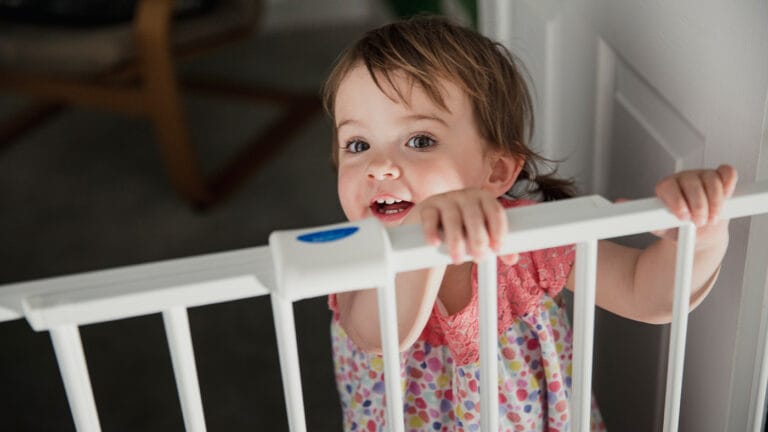There’s no better way to spend warm summer days than splashing through the water with the family at the pool, beach, or lake. Warm, sun-filled afternoons while eating snacks with your toes in the water are a surefire way to form lifelong memories. As great as water activities are for beating the summer heat, drowning continues to be the primary cause of unintentional deaths among children ages 1 to 4 and the third leading cause for children and adolescents 5 to 15, with the majority occurring May through August here in Utah. These stats emphasize how crucial it is to keep a close eye out and take proactive steps to shield our kids from the often unseen risks of water.
Ensure the memories you make are good by keeping these water safety tips in mind all summer.
Tip #1) Swim Safely with a Designated Watcher
Accidents can happen instantly, and caregivers must be vigilant to ensure children remain safe while playing in the water. In a group setting, at a public pool, or having a playdate in your backyard, it can be easy to assume someone else has their eyes on the kids. Tragedy can strike right under our noses if we don’t keep a sharp eye out.
- Designate a Watcher: Always have at least one responsible adult watching the kids in the water at all times. Just like lifeguards, rotate this duty every 30 minutes with the other adults to stay focused.
- Minimize Distractions: Put away your phone, close your book, and avoid lengthy conversations. This will eliminate any distractions and help you stay focused on your kid(s) in the water.
Tip #2) Keep Pools, Bathtubs, and Other Water Areas Safe
As many as 69% of young children who drowned or are found submerged in swimming pools were not expected to be in or at the pool to begin with. Create a safer environment for children around your home and property using a multifaceted approach to secure all water sources.
- Barriers and Locks: Pools should be behind fences with locked gates whenever possible, and they should be covered or drained when not in use to prevent unsupervised access.
- Pool Toy Storage: Put pool toys away when not being used to discourage kids from wanting to play near the water.
- Bathtub Safety: Drain bathtubs immediately once bathtime is over. Remember, if it’s deep enough for a child to put their mouth and nose into, it’s deep enough to pose a drowning risk.
- Buckets and Play Areas: Even a tiny amount of water is a potential drowning risk for infants and young children. Empty all containers containing water, such as buckets or pails, play tables, or splash pads immediately after use.
Tip #3) Wear a Life Jacket
With their fun designs and buoyancy, pool floaties are popular among children but are not reliable life-saving devices. Flotation devices should be U.S. Coast Guard-approved life jackets and life preservers. Flotation devices are a good idea for anyone spending time in or near the water.
- Wear at All Times: Even experienced swimmers should wear an approved flotation device when in the water. Even in shallow water, an unintentional slip could endanger you or your child, and a life vest could make all the difference.
- Proper Fit: Ensure your child’s flotation device fits appropriately and all straps function correctly. You should be able to pick your child by the shoulder straps of their life vest without their head and shoulders slipping through.
- Practice Ahead of Time: Young children sometimes fight against wearing a flotation device. Practice at home to familiarize your child with their life vest before hitting the water.
- Set a Good Example: Model good water safety by wearing your life vest while swimming.
Tip #4) Teach Children to Swim Safely
- Visit the Pool at an Early Age: When developmentally appropriate or when your child expresses interest, teach them how to swim. Supervised exposure to a watery environment will prepare them to be comfortable and safer around water in the future.
- Build Confidence: Learning to swim can help your child build confidence in and out of the water. It’s also an excellent way for kids to get some exercise during the sedentary summer months.
- Protect Your Baby’s Skin: Everyone loves the summer sunshine, but there is too much of a good thing. Don’t forget to apply sunscreen 15 – 30 minutes before going outside, even on cloudy days, and reapply regularly.
- Sun Safety: Avoid sun exposure during peak hours (10:00 am to 4:00 pm) and protect your little one’s eyes with sunglasses and hats.
- Babies Under Six Months: Before six months old, your baby’s skin may not have developed its natural protection from sun exposure. It’s important to keep infants out of direct sunlight, under umbrellas or the shade of a tree, and away from harmful UV rays.
Know your water hazards, use appropriate safety gear, and keep an eye on your little ones at all times. Whether you’re spending the day at the beach, pool, or lake, water safety guidelines will ensure everyone stays safe and happy all summer!





